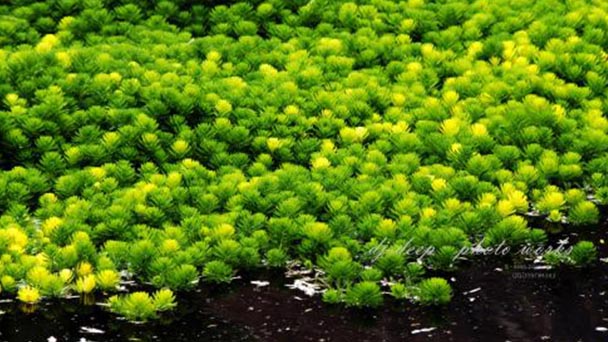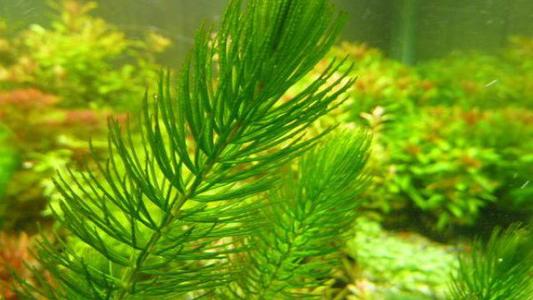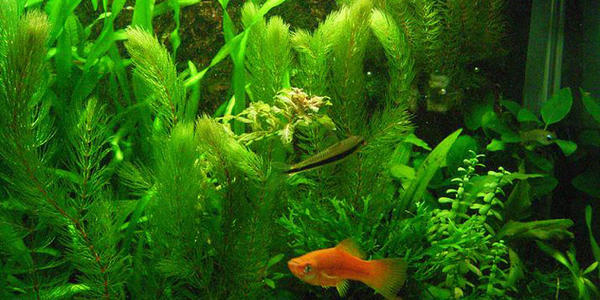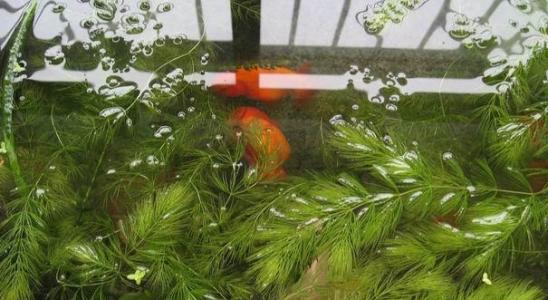How to grow and care for Coontail
Written by Maggie
Sep 01 2021

How much do you know about Coontail? It is a perennial herb of the submerged aquatic plant, alias fine grass, soft grass, fish grass.Growing in small lakes where still water, used to be common in ponds, ditches, etc., can be used as pig, fish and poultry feed. After understanding the use of Coontail, the following series will focus on how to grow and care for Coontail.

How to grow Coontail
Best growing time: coontail is usually planted after autumn, and October to November is the best.
Best growing soil: Coontail plant does not require much in the way of soil, which should be made of slightly acidic sandy loam that is fertile, loose and well drained.
Growth humidity requirements: Coontail requires low air humidity, fruit development to provide sufficient water. Seed maturity stage: air dry dormancy or semi-dormancy stage: reduce watering to prevent root rot 3.4 Soil.
Optimal growth temperature: Coontail is cold-resistant, heat-resistant, and suitable for temperature growth. From September to March of the following year, Coontail is 7 ~ 10℃, and from March to September, it is 13 ~ 16℃. The seedlings pass through the vernalization stage at 5℃. High temperature is adverse to the growth and development of Coontail, and the suitable temperature for flowering is 15 ~ 16℃. Some species have no branching over 15℃, which affects the plant state.
Best growing light: Coontail is a light-loving herb. Under full sunshine, plants are short, compact clumps, orderly growth, uniform height, neat flowering, bright colors. Under half - shade condition, Coontail growth is on the high side. The inflorescence is elongated, the flower color is lighter.

How to care for Coontail
1. In the process of growing Coontail plant, the fertilizer should not be too much. It should be fat but not thin. If you want to grow Coontail over a large area then there should be no other weeds in the whole pond. And make sure that the water is of good quality. When the fish is reared together, it eats the whole Coontail, so keep the water clean and replace it often.
2. The whole depth of Coontail should also be paid attention to. The depth of the whole water should be kept within a range of 1 meter. If the water is too deep, then Coontail leaves may be reduced, which makes Coontail yield bad and unattractive. This, in turn, reduces the utilization of the weed and thus reduces the commercial value of the entire Coontail.
3. In general, Coontail's first harvest is about 50 days. However, it is important to pick up the Coontail with a stick and run it around in the water before lifting it. The second collection was about 30 days.The final collection is only a few days apart.
Control of diseases and pests: Bacterial leaf spot is the main disease occurring at the seedling stage of Coontail. Leaf blight, bacterial blotchy disease, anthrax and other infection leaves, stems, can be bordeaux wave or ethyl thiophosphate 400 times liquid control. Sclerotia can be sprayed with a 1000 times solution of methyl tobuzin. For aphids and burglars, 40% dimethoate butter 1000 times solution can be used to control.

Cultured Coontail hydroponics:
1. Coontail grass has no roots and the whole plant is submerged in water, so the growth is closely related to the light. When the water is too muddy and the water penetrates less light, the Coontail does not grow well, but it can still resume growth after the water is clear and penetrates into the sunlight. At 2 to 3% light intensity, the growth is slow. At 5 to 10 percent light intensity, Coontail grows rapidly, but strong light causes death. Coontail can grow normally in a weak alkali environment, and is most suitable in water with pH value of 7.6 ~ 8.8.
2. Note that Coontail must grow to a certain size before moving into the fish tank, or it will not grow fast enough to catch up with the speed of the fish eating algae. Coontail is wide for water temperature, but is sensitive to ice and can easily freeze to death in cold water. Eutrophication water is harmful to Coontail growth. Because these substances consume a lot of dissolved oxygen in water as they are broken down by microbes.
Latest Updated
- Benefits of Bugleweed - 7 Science-backed Health Benefits
- Bugleweed Dangers & Side Effects - Is It Poisonous?
- How to Plant Evergreen Trees - What You Should Know
- When to Plant Evergreens - Grow Guide for Evergreen Trees
- 12 Wonderful Evergreen Shrubs for Your Garden
- 12 Popular Evergreen Plants with Pictures for Beginners
- When And How To Prune A Lilac Bush Like a Pro
- How to Grow & Care for Lilac Vine (Hardenbergia Violacea)
- Japanese Lilac Tree (Syringa Reticulata) Care & Propagation Guide
- Shumard Oak Pros and Cons - What to Know
Popular Articles
- Winter maintenance of Antirrhinum Majus
- How to Grow Terminalia Mantaly Tree
- How to Grow and Care for Crossostephium Chinense
- How to grow Antirrhinum Majus in spring
- Peristeria Elata (Dove Orchid) Profile: Info & Care Guide
- Underwatered Snake Plant (Sansevieria Trifasciata) - Signs And How To Fix
- How to Care for Brazilian Jasmine Plant (Mandevilla Sanderi)
- How to Grow & Care for Graptopetalum Purple Delight in Summer
- Rosa Chinensis (China Rose): Plant Growing & Care Tips
- How to Care for Baby Sun Rose (Aptenia Cordifolia)